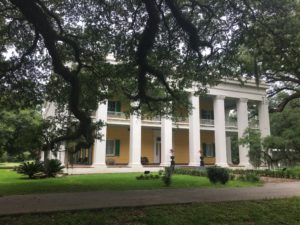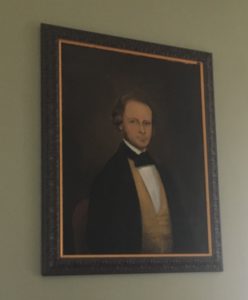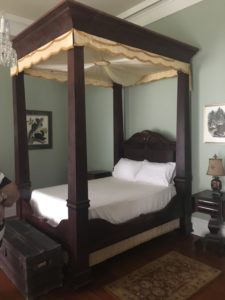
On February 11, we celebrate the birthdays of two leaders of the nineteenth-century New Orleans turf whom we’ve written about at length here at the Times, both born on this date: Colonel Adam L. Bingaman (2/11/1793—9/6/1869), originally of Natchez, Mississippi, and Duncan F. Kenner (2/11/1813—7/3/1887), for whom the Duncan F. Kenner Stakes–a 6-furlong, $100,000 sprint race at Fair Grounds Race Course–is named.

For this occasion, Times staff is sharing a few never-before-seen photos taken at Kenner’s former Ashland Plantation house in Geismar, Ascension Parish, Louisiana. Read up on Kenner, Ashland, and his champion jockey Abe Hawkins in our previous post here.
These photos were shot in June 2017 when the Times was working on its contribution to Louisiana Cultural Vistas magazine, entitled, “Diligent Restoration: The renovation and remarkable history of Ashland-Belle Helene plantation,” about the 2015 renovation of the house by its current owner, Shell Chemical Company. “Belle Helene” became the home’s new name when purchased in 1889 after Kenner’s death.

An upstairs bedroom features Kenner’s original canopy bed, proven by his initials that were found carved in the wood, and an 1846 portrait of him at age 33 by artist Jules Lion hangs on the wall. In the bedroom next door stands a prop canopy bed that remains from the on-site filming of the Clint Eastwood movie The Beguiled (1971).

Last is a shot of the home’s magnificent spiral staircase. We recommend picking up a copy of Richard Sexton’s book, Vestiges of Grandeur: Plantations of Louisiana’s River Road (1999), which includes interior photos of Ashland-Belle Helene from when the home was in disrepair, with this spiral staircase gracing the book’s front cover.
Since its renovation, Shell Chemical Company uses the house for business meetings and community events. We hope to make a return visit in order to view the museum area that was in the planning stage when these photos were taken. As described by Shell staff, the exhibit is intended to acknowledge the history of this sugar plantation–specifically its enslaved workforce that reached nearly 500 people in 1860–by providing an interpretive history including posters with narratives about the plantation’s past as well as artifacts on view.
Leave a Reply
You must be logged in to post a comment.